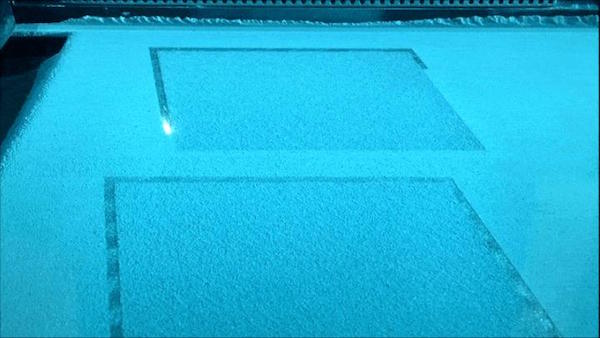NASA Grant Funds 3D Print Modeling

A laser interacts with inconel powder at the Swanson School’s ANSYS Additive Manufacturing Research Lab. Image courtesy Swanson School of Engineering/ANSYS.
Latest News
December 2, 2018
Researchers from QuesTek Innovations and the University of Pittsburgh Swanson School of Engineering are using new computer modeling and optimization techniques, along with a nickel-iron super-alloy, to accelerate the adoption of additive manufacturing for NASA projects. NASA recently awarded the research team a $750,000 grant.
The project, titled “Integrated Computational Material Engineering Technologies for Additive Manufacturing,” is one of 20 research and technology proposals funded through Phase II of NASA's competitive Small Business Technology Transfer (STTR) program.
“For as promising as AM is to modern manufacturing, its acceptance by major commercial or government industries like NASA comes down to a lack of confidence in the quality of the part,” said Jiadong Gong, Ph.D., technical fellow at QuesTek in Evanston, Ill. “The majority of systems are based largely on hand-tuned parameters determined by trial-and-error for a limited set of materials, which is ineffective, costly and can contribute to mission failure.”
QuesTek and Pitt will work together to develop an Integrated Computational Materials Engineering (ICME) framework for Inconel 718, a super-alloy used for high-temperature environments in aerospace applications.
Assistant Professor Wei Xiong, Ph.D. and Associate Professor Albert To, Ph.D., of the Swanson School's Department of Mechanical Engineering and Materials Science will assist by providing expertise in integrated computational mechanical and materials design, supported by AM resources in the Swanson School's ANSYS Additive Manufacturing Research Laboratory and Nanoscale Fabrication & Characterization Facility.
The researchers are also developing a software tool that can be used to reduce costs and improve AM techniques in other industries such as automotive, biomedical and energy.
“Research partnerships between industry and universities such as Pitt can truly help to advance new technologies, thanks to programs such as those funded by NASA,” Dr. Xiong said. “At Pitt, we have focused on process-structure-property optimization and improved computer modeling with advanced alloys to mitigate these issues and improve quality control. Combined with QuesTek's expertise in Materials by Design, we can accelerate the insertion of materials not only for NASA but for commercial industries as well.”
Source: EurekaAlert
More Ansys Coverage
Subscribe to our FREE magazine, FREE email newsletters or both!
Latest News
About the Author
Brian Albright is the editorial director of Digital Engineering. Contact him at [email protected].
Follow DE





